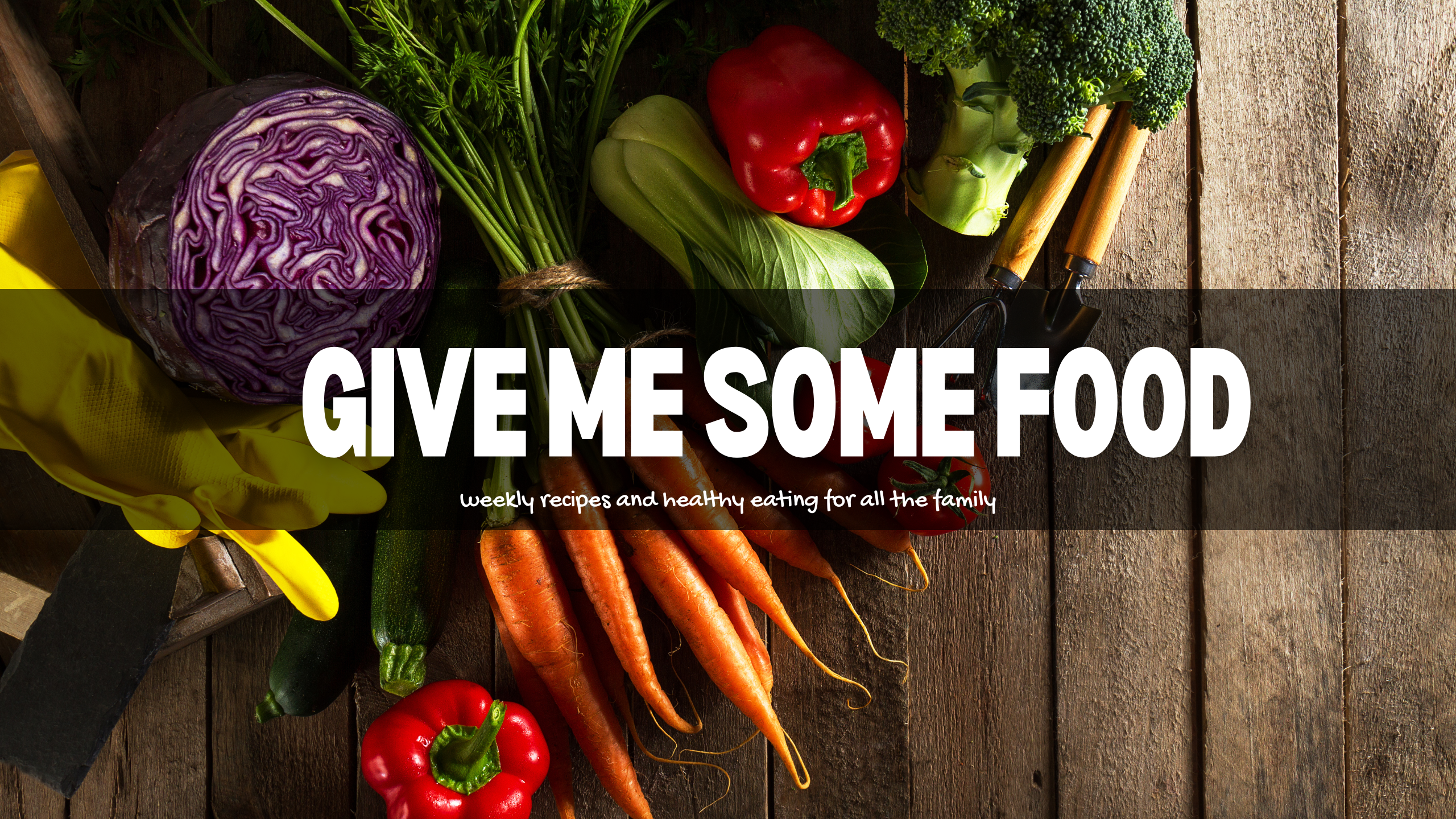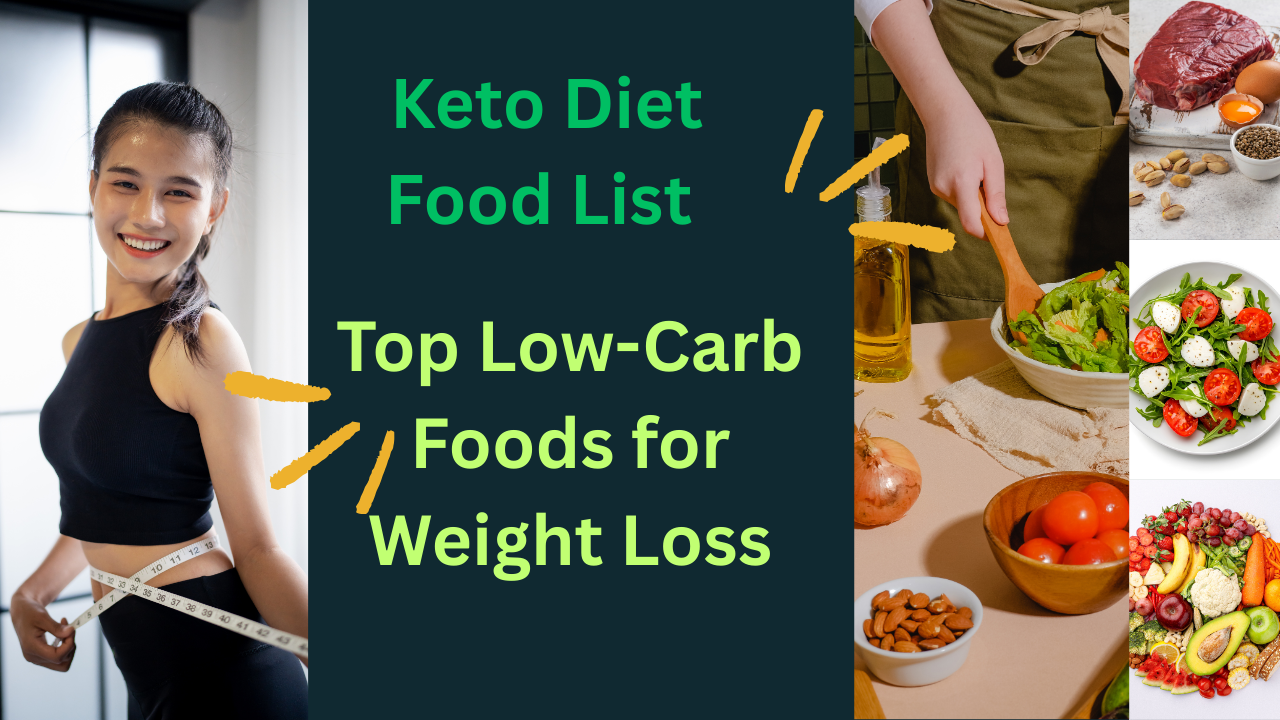Ketogenic diet has become one of the most followed eating plans in recent years. It focuses on high fat, moderate protein, and very low carbohydrate intake. By doing so, it helps the body enter a state called ketosis, where it burns fat for energy instead of carbs. Many people turn to this diet for its potential to aid in weight loss and improve overall health.
The popularity of the ketogenic diet continues to grow because of the many benefits it offers. These include fast fat loss, better focus, and steady energy throughout the day. Unlike traditional diets that rely on counting calories, keto shifts the body’s fuel source, which can help reduce hunger and cravings.
However, the success of the ketogenic diet depends heavily on food choices. Picking the right types of fats, proteins, and low-carb vegetables is key. Eating clean, whole foods while avoiding processed items makes it easier to stay in ketosis and see results.
This detailed guide will cover everything you need to know about the top foods to eat on a keto diet. We’ll explore various food categories, list the best keto-friendly choices, and delve into their nutritional benefits. Whether you’re a keto beginner or a seasoned follower, this food list will help you stay on track and thrive.
What is the Keto Diet ?
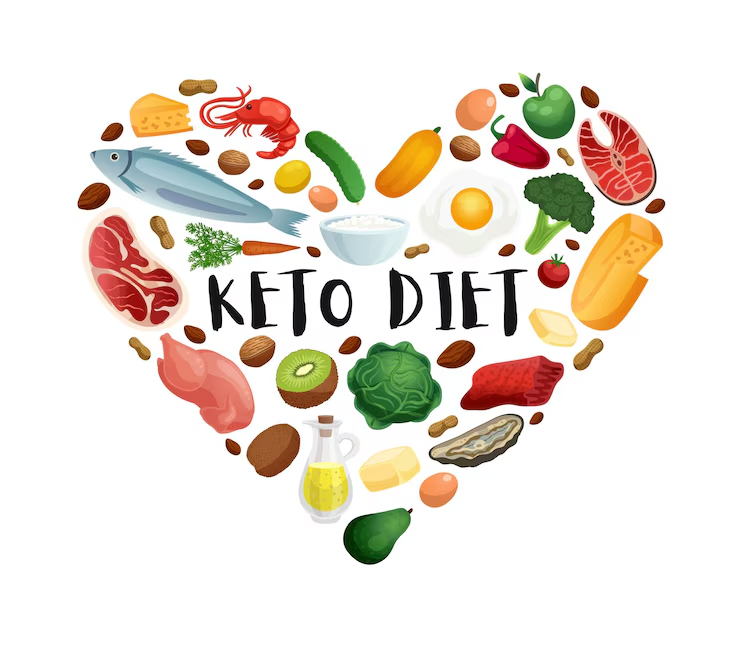
The ketogenic diet is a popular eating plan known for its high-fat, low-carbohydrate, and moderate-protein approach. It changes the way the body uses energy by shifting the main fuel source from carbohydrates to fats.
When you reduce your intake of carbohydrates, the body’s supply of glucose drops. In response, the body begins to break down fat into molecules called ketones. These ketones are then used as the primary energy source for the brain and body.
This process is called ketosis. Once the body enters ketosis, it becomes highly efficient at burning stored fat for fuel. This can lead to noticeable weight loss and improved energy levels.
By staying in ketosis, many people also report better mental focus and fewer hunger cravings. However, achieving and maintaining ketosis depends on strict food choices, mainly avoiding sugar and starch while including healthy fats and proteins in your meals. This careful balance is what makes the ketogenic diet effective.
Macronutrient Breakdown of a Typical Keto Diet:
Fat: 70-75%
Protein: 20-25%
Carbohydrates: 5-10% (usually under 50 grams of net carbs per day)
This macro ratio forces the body to use ketones—molecules made in the liver from fats—as its primary fuel source.
Top Keto Diet Foods and Their Benefits
Let’s break down the keto diet food list by category for easier reference and explain why each group is beneficial.
Healthy Fats and Oils
Fats are the most important part of the keto diet and play a key role in how the body functions. They replace carbohydrates as the main source of energy, helping the body stay in a fat-burning state called ketosis.
In addition to providing energy, fats support many essential body functions. They help with hormone production, keep brain function sharp, and promote healthy cells. This is why choosing the right types of fats is so important when following a keto lifestyle.
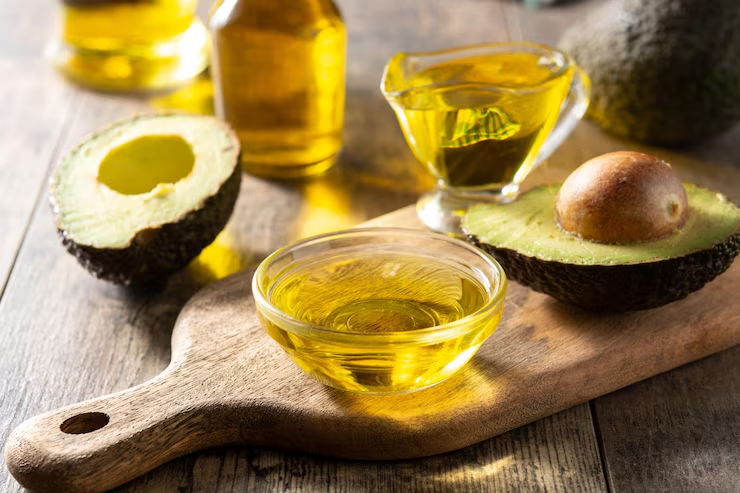
When creating a keto diet food list, it’s important to focus on healthy fat sources like avocados, nuts, seeds, olive oil, and fatty fish. These foods not only keep you full but also help maintain good health while supporting your keto goals. Including a variety of fat-rich foods ensures you’re getting the nutrients your body needs on the keto diet.
Top Keto Fats and Oils:
| Food Item | Key Nutrients | Benefits |
|---|---|---|
| Avocados & Avocado Oil | Monounsaturated fats, Potassium | Reduces inflammation, supports heart health |
| Olive Oil | Antioxidants, Healthy fats | Protects against heart disease, improves cholesterol levels |
| Coconut Oil & MCT Oil | Medium-chain triglycerides (MCTs) | Quick energy source, supports ketone production |
| Butter & Ghee | Butyrate (short-chain fatty acid) | Aids digestion, supports brain function |
| Animal Fats (tallow, lard, duck fat) | Nutrient-dense, stable for high-heat cooking | Great for cooking, keeps you full and energized on a keto diet food list |
Protein Sources (Moderate Intake)
While the keto diet is mainly focused on fats, quality protein still plays an important role in your overall nutrition. It helps support key functions in the body without interfering with ketosis, as long as intake is moderate.
Protein is essential for muscle repair and recovery, especially if you are physically active. It also helps strengthen the immune system and plays a major role in keeping your hormones balanced. These benefits make protein a necessary part of a healthy keto lifestyle.
When building your keto diet food list, include good sources of protein like eggs, poultry, fatty fish, and grass-fed meats. These foods offer the right balance of nutrients without adding too many carbs. Choosing high-quality protein helps you feel fuller for longer and supports long-term health goals while staying in ketosis.
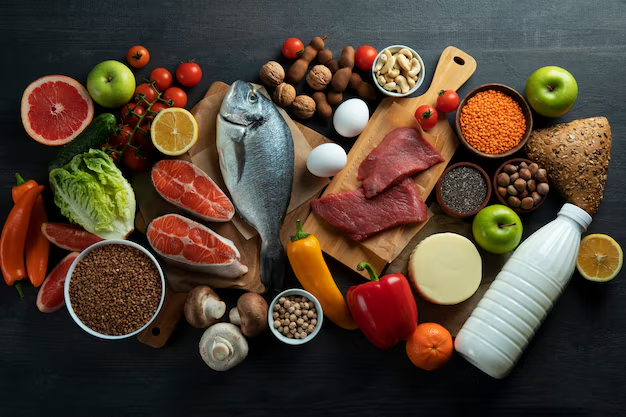
| Protein Source | Key Nutrients | Benefits |
|---|---|---|
| Eggs | Complete protein, Essential amino acids | Improves HDL cholesterol, supports eye and brain health |
| Fatty Fish (salmon, mackerel, sardines) | Omega-3 fatty acids | Reduces inflammation, boosts brain health |
| Beef, Lamb, and Pork | Iron, Zinc, Vitamin B12 | Grass-fed options add more omega-3s, supports energy and red blood cells |
| Poultry (chicken, turkey, duck) | Lean protein, Fat (with skin) | Versatile protein, skin adds helpful fats for your keto diet food list |
| Organ Meats (liver, kidney, heart) | Iron, Vitamin A, B Vitamins | Extremely nutrient-dense, supports overall health |
| Shellfish (shrimp, crab, oysters) | Minerals, Low carbs | Boosts immunity and supports thyroid function |
Low-Carb Vegetables
Vegetables play an important role in any healthy eating plan, and they are especially vital on the keto diet. They provide essential fiber, vitamins, and minerals that support digestion, heart health, and the immune system.
On a keto diet, it’s important to choose vegetables that are low in carbohydrates. Non-starchy vegetables are the best option because they help keep your carb intake low while still offering important nutrients your body needs every day.
When planning your keto diet food list, focus on vegetables like spinach, kale, broccoli, cauliflower, zucchini, and bell peppers. These choices are low in carbs but rich in antioxidants and fiber. Including a variety of these vegetables helps maintain good health and supports your keto goals without kicking you out of ketosis.
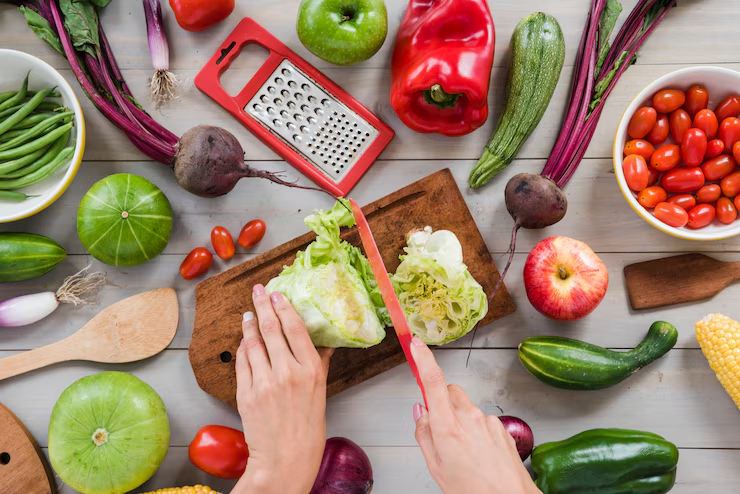
Top Keto Vegetables:
| Vegetable Type | Key Nutrients | Benefits |
|---|---|---|
| Leafy Greens (spinach, kale, arugula, romaine) | Low carbs, rich in nutrients | Supports detoxification and bone health |
| Cruciferous Vegetables (broccoli, cauliflower, Brussels sprouts) | Sulforaphane, antioxidants | May protect against cancer, aids digestion |
| Zucchini & Summer Squash | Vitamin C, hydrating properties | Great for keto-friendly noodles, refreshing on a keto diet food list |
| Asparagus | High in fiber and folate | Supports digestion, helps reduce inflammation |
| Mushrooms | Antioxidants, immune-supporting compounds | Boosts immunity, rich in nutrients despite being fungi |
| Peppers (bell and hot varieties) | Vitamin C, carotenoids | Adds flavor and crunch, supports immune health |
Dairy and Dairy Alternatives
Dairy can be a useful part of a keto diet because it provides both fat and protein. These nutrients help you feel full and support energy levels, making dairy a convenient choice for many keto followers.
However, not everyone responds well to dairy. Some people may experience issues due to lactose intolerance or sensitivity, which can lead to inflammation or digestive discomfort. It’s important to listen to your body and choose dairy products that suit your needs.
When building your keto diet food list, include full-fat, low-carb options like cheese, cream, and plain Greek yogurt if you tolerate them well. These foods can add flavor and variety to meals while helping you stay in ketosis. If dairy doesn’t work for you, be sure to adjust your keto diet food list to include other sources of fat and protein, such as coconut products or nut-based alternatives.
Top Keto Dairy Choices:
| Dairy Product | Key Nutrients | Benefits |
|---|---|---|
| Heavy Cream | Very low in carbs, high in fat | Adds richness and satiety to meals, ideal for a keto diet food list |
| Cheese (cheddar, mozzarella, parmesan, goat) | Low-carb, high in calcium | Promotes bone health, satisfying and filling |
| Greek Yogurt (unsweetened, full-fat) | Moderate carbs, probiotics, protein | Supports gut health and provides protein—choose carefully for your keto diet food list |
| Cottage Cheese (full-fat) | Rich in casein protein | Great for muscle repair, suitable for snacks and recipes |
| Butter and Ghee | High in fat, low in lactose | Excellent for cooking and enhancing flavor |
Nuts and Seeds
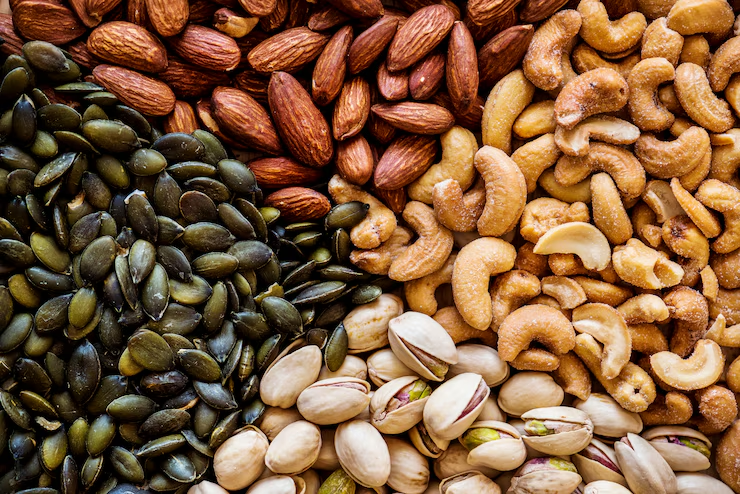
Nuts and seeds are popular additions to a keto diet because they are packed with healthy fats, fiber, and some protein. They are excellent for snacking, baking, or adding crunch to meals and desserts.
However, it’s important to watch your portion sizes. While they fit well into a keto diet food list, some nuts and seeds contain more carbs than others. Eating too many can quickly add extra calories and carbs, which might affect your progress in staying in ketosis.
When creating your keto diet food list, choose options like almonds, walnuts, chia seeds, flaxseeds, and macadamia nuts. These are lower in carbs and offer valuable nutrients. Just be mindful of how much you eat, and try to measure servings when possible to stay on track with your keto goals.
Top Keto Nuts and Seeds:
| Nut/Seed | Key Nutrients | Benefits |
|---|---|---|
| Macadamia Nuts | Lowest in carbs, high in healthy fats | Promotes heart health, great for any keto diet food list |
| Pecans | High in fat, low in carbs | Rich in antioxidants, fits well into a keto diet food list |
| Walnuts | Omega-3 fatty acids | Supports brain health, has anti-inflammatory effects |
| Chia Seeds | High in fiber and omega-3s | Aids digestion and boosts satiety |
| Flaxseeds | Lignans and fiber | Helps balance hormones and regulate cholesterol |
| Pumpkin Seeds | Magnesium-rich | Supports heart function and promotes better sleep |
Berries (In Moderation)
Most fruits are naturally high in sugar, which makes them less suitable for a keto lifestyle. Since the keto diet limits carbohydrate intake, eating sugary fruits can interfere with staying in ketosis and slow down your progress.
However, not all fruits are completely off-limits. Certain low-glycemic berries, like strawberries, raspberries, and blackberries, can be enjoyed in small amounts. These berries are lower in sugar and rich in fiber and antioxidants, making them a smart choice for a balanced keto approach.
When planning your keto diet food list, include these low-carb berries in moderation. They can be added to smoothies, salads, or enjoyed as a light dessert. Just be mindful of portion sizes to keep your carb intake under control. Including a few berries in your keto diet food list adds variety while still supporting your health goals.
Top Keto Berries:
| Berry | Key Nutrients | Benefits |
|---|---|---|
| Raspberries | High in fiber, lower in carbs | Rich in antioxidants, great addition to a keto diet food list |
| Strawberries | Sweet but relatively low in carbs | Helps regulate blood sugar, fits well in a keto diet food list |
| Blackberries | High in vitamins C and K | Offers anti-inflammatory effects and supports gut health |
| Blueberries | Higher in carbs (limit portions) | Contains polyphenols that support brain health |
Beverages on Keto
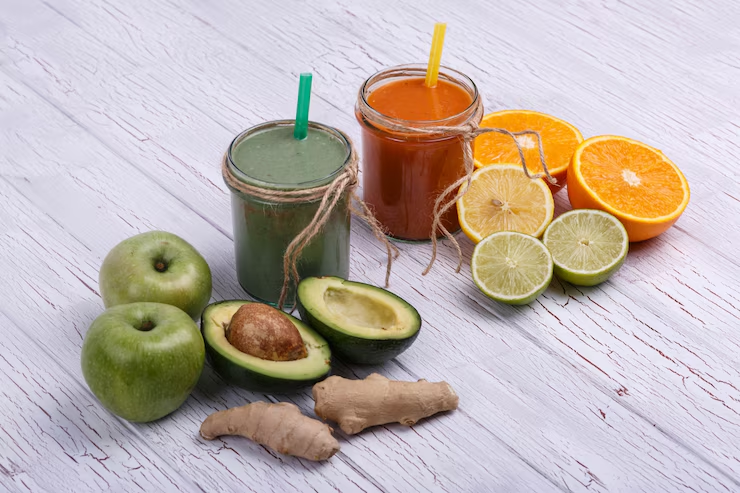
Staying hydrated is an important part of any healthy lifestyle, and it’s especially important on the keto diet. As your body shifts into ketosis, it releases more water and electrolytes, making hydration a top priority.
When choosing drinks for your keto diet food list, it’s best to avoid anything that spikes insulin or contains hidden sugars. Sweetened beverages like soda, juice, or energy drinks can quickly raise blood sugar and kick you out of ketosis.
To stay on track, include beverages like water, herbal teas, black coffee, and sparkling water in your keto diet food list. These options keep you hydrated without adding unnecessary carbs. You can also add a pinch of salt or a splash of lemon for extra flavor without breaking your diet.
Top Keto Drinks:
| Beverage | Key Features | Benefits |
|---|---|---|
| Water (still and sparkling) | Essential for hydration | Add lemon or electrolytes; vital part of any keto diet food list |
| Coffee | Unsweetened black or with cream | Improves focus and metabolism, popular in the keto diet food list |
| Tea (green, black, herbal) | Natural, carb-free | Provides antioxidants and anti-inflammatory benefits |
| Bone Broth | Rich in collagen and minerals | Supports gut health and joint function |
| Electrolyte Drinks (keto-specific) | Maintains sodium, potassium, magnesium | Helps prevent dehydration and keeps the body balanced on keto |
Condiments and Spices
Flavorful meals are important for staying satisfied on any diet, and the keto diet is no exception. Luckily, you can add rich taste to your food without adding extra carbs by using keto-friendly seasonings.
Many herbs and spices are naturally low in carbohydrates and offer great health benefits. Garlic powder, black pepper, turmeric, basil, oregano, and cinnamon are just a few examples that bring both flavor and nutrients. These choices can enhance any dish and help you enjoy your meals more.
When creating your keto diet food list, don’t forget to include a variety of seasonings. They not only make meals more enjoyable but also support your health goals without kicking you out of ketosis. Keep your meals exciting and full of flavor by using these spice options in your keto diet food list regularly.
Top Keto Condiments and Spices:
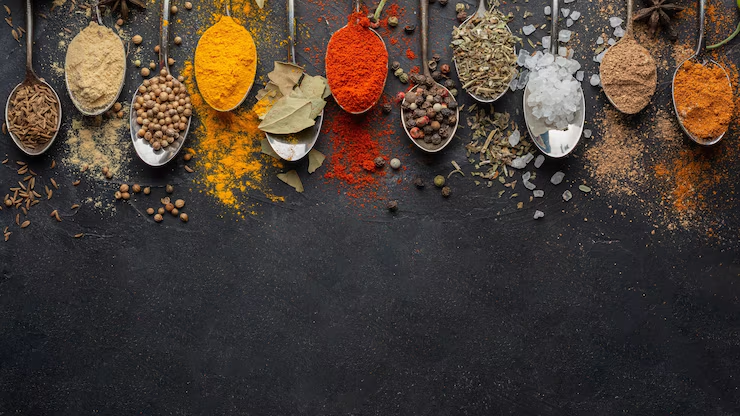
Mustard
Mayonnaise (avocado oil-based)
Apple Cider Vinegar
Coconut Aminos
Herbs: basil, oregano, thyme, rosemary
Spices: turmeric, cinnamon, cumin, paprika, garlic powder
Sweeteners (Keto-Approved)
Craving sweets while on a keto diet is normal, but it’s important to choose the right sweeteners to avoid disrupting ketosis. Natural, low-glycemic sweeteners can help you enjoy treats without causing a spike in blood sugar levels.
Some popular keto-friendly sweeteners include stevia, erythritol, monk fruit, and allulose. These options are plant-based or sugar alcohols and are generally well-tolerated. They offer sweetness without adding net carbs, making them a smart choice for your diet.
When putting together your keto diet food list, consider adding these sweeteners for use in baking, drinks, or desserts. They allow you to enjoy sweet flavors while staying committed to your health goals. Including them in your keto diet food list can help you stay on track without feeling deprived.
Top Keto Sweeteners:
Stevia
Erythritol
Monk Fruit
Allulose
Foods to Avoid on Keto
To stay in ketosis, you must strictly avoid high-carb foods:
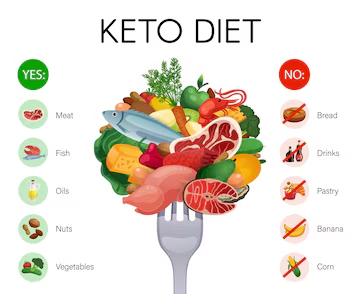
Grains such as wheat, rice, oats, and corn are high in carbohydrates and should be excluded from any keto diet food list. These grains can significantly raise blood sugar levels and interfere with ketosis.
Sugars like honey, agave nectar, maple syrup, and cane sugar are natural or refined sweeteners that contain large amounts of carbohydrates. They are not suitable for inclusion in a keto diet food list due to their high glycemic impact.
High-carb fruits such as bananas, apples, grapes, and mangoes are rich in natural sugars. These fruits can easily exceed daily carb limits and should be avoided on a keto diet food list.
Starchy vegetables including potatoes, carrots, peas, and corn are dense in carbohydrates and are not recommended for a keto diet food list.
Legumes like beans, lentils, and chickpeas are high in both carbs and fiber but do not fit well into a strict keto plan.
Processed foods such as chips, pastries, and most types of fast food contain hidden sugars and carbs, making them unsuitable for a keto diet food list.
Sweetened beverages including soda, fruit juices, and sugary teas are packed with sugar and must be completely avoided when following a keto diet food list.
Conclusion
Embracing a ketogenic lifestyle begins with understanding the right foods to fuel your body effectively. By following a carefully curated keto diet food list, you can ensure your meals are nutrient-dense, satisfying, and low in carbs, which is essential for staying in ketosis. From healthy fats and quality proteins to low-carb vegetables and keto-approved snacks, these food choices offer a wide range of health benefits—including improved energy levels, better mental clarity, and sustainable weight loss.
Staying consistent with your dietary habits becomes easier when you have access to a well-structured keto diet food list. It not only removes the guesswork from grocery shopping but also empowers you to make informed, health-conscious decisions every day. Whether you’re new to keto or looking to fine-tune your approach, this comprehensive guide is your go-to resource for lasting success on your keto journey.
FAQs
- What is a keto diet food list ?
A keto diet food list includes high-fat, low-carb, and moderate-protein foods that support ketosis. It typically features meats, eggs, healthy oils, low-carb vegetables, nuts, and keto-friendly dairy. - Can I eat fruit on a keto diet ?
Most fruits are high in sugar and carbs, but small portions of low-glycemic fruits like berries can be included in a keto diet food list. - Are dairy products allowed on the keto diet ?
Yes, full-fat, low-carb dairy such as cheese, heavy cream, and Greek yogurt can be part of your keto diet food list, unless you have a sensitivity. - What foods should I avoid on keto ?
Avoid grains, sugars, high-carb fruits, starchy vegetables, legumes, and processed foods, as they do not fit the keto diet food list. - Can I have snacks on a keto diet ?
Yes, keto-friendly snacks like nuts, cheese, hard-boiled eggs, and avocado slices can be added to your keto diet food list.
